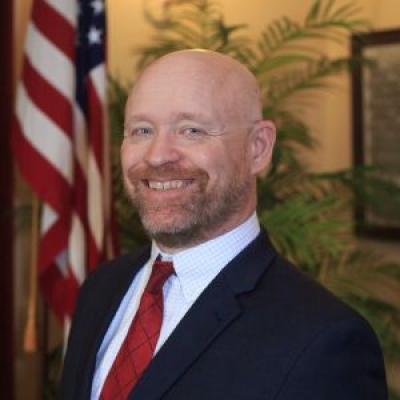For decades, Ohio policymakers have piled regulations onto public schools. Up to a point, this top-down, input-driven approach made sense, back in an era when too many students weren’t receiving even a rudimentary education, and when we weren’t nearly as fussy about academic results.
But times have changed. We now realize that students need strong minds—not just strong backs—to compete for jobs in a competitive and knowledge-based economy. Rigorous academic expectations are the “coin of the realm” in contemporary education policy—but there is also now near-universal consensus that youngsters deserve schooling experiences tailored to their individual needs, gifts, and interests.
These powerful forces demand a radically different approach to public education—and especially to the old regulatory regime that ruled it. The state must demand that schools raise their academic performance to ready all Ohio students for success in college or career. (Currently, 40 percent of Ohio’s college-going freshmen require some form of remediation.) In return, educators should have the autonomy to design instruction aimed at achieving these ambitious goals and to customize their approaches to accord with their pupils’ needs, capabilities, and circumstances. This means that the compliance-based approach to public education must give way to more flexible arrangements.
Ohio has taken some praiseworthy steps in this direction. The state is implementing rigorous school report cards that shine a bright light on academic results. Ohio families have more schooling options than ever before, including public charters, private-school vouchers, and an array of specialty schools like STEM, early-college, and technical-vocational schools. Legislators recently created a competitive-grant program (the Straight A Fund) that has catalyzed more than sixty innovative projects during the past two years.
Yet despite these valuable moves, the state continues to shackle its public schools with a burdensome regulatory regimen. Policymakers understand that this is a problem—and are considering ways to cut some of the red tape. Governor John Kasich and Senate President Keith Faber have both pointed to the need for education “deregulation,” and legislators have responded by introducing bills that would (if enacted) free certain districts from a handful of burdensome state requirements. In our view, however, lawmakers could go much bigger and bolder.
Given the urgency, the promise—and the peril—of deregulating public schools, we sought to create a framework for Ohio policymakers. What should be on the table for deregulation? What are the issues that policymakers should not touch? What are the surest levers to provide educators and local communities with needed flexibility? Should legislators simply repeal laws and start over, or are there other alternatives? And what about local schools? If given greater freedom, how should they wield it, and how can state policymakers safeguard against abuse?
Such knotty questions deserved expert thinking. So we enlisted Paolo DeMaria of Education First (along with two of his colleagues) to author a policy brief that tackles these issues. Paolo is a veteran of Ohio’s policy debates, having worked in leadership roles at the Board of Regents, the Department of Education, and with the legislature and governor’s office. We could think of no one better suited to write a timely, discerning paper on deregulation within an Ohio policy context.
The anchoring principle of Paolo’s fine brief is that, if educational excellence is to be a top-priority for the state, policymakers must vest much greater operational authority with on-the-ground educators and leaders. We understand that this is commonsense. It dates back to the ancient idea of “subsidiarity.” This is the conviction that, whenever possible, the people closest to a problem should have the power as well as the obligation to address it.
It’s also a view that we at Fordham have been pressing for years. Indeed, empowering education leaders on the ground is one reason we support the charter-school model, which allows schools to operate under less state interference. In reports like Yearning to Break Free and Ohio at the Crossroads, we’ve also documented our belief that district schools should not have to toil under heavy regulation, either.
The present work fleshes out in greater detail the policy mechanisms by which Ohio policymakers can empower local leaders—and nurture the productive use of newfound autonomies. The paper recommends several avenues, including rolling back archaic legislation (we flag areas ripe for repeal), providing for a simple waiver process that districts can use, and creating a culture where deregulatory activity becomes normal and expected, not the exception.
The suggestions for repeal, while we acknowledge can be subject to controversy, are necessary areas of reform. They focus on giving districts the flexibility to fine-tune their staffing arrangements in order to ensure the very best education for their students. Some of these flexibilities have already been given to school leaders in Cleveland’s school district, STEM schools, and charters. We recommend that state policymakers provide the same staffing flexibilities for districts across Ohio.
The paper also insists—and we strongly concur—that granting regulatory relief hinges on an unwavering commitment to state-led, results-based accountability based on rigorous academic standards and assessments. Buckeye policymakers must ensure a fair and transparent system that holds all public schools and districts to account for the outcomes of all their students. Autonomy in exchange for honest-to-God accountability—that’s the bargain.
Experience shows the wisdom of this axiom: Government authorities can tell schools what to do, but they can’t force them to do things well. No government can regulate schools into excellence. Yet all of Ohio’s students deserve an excellent education, and that requires Ohio policymakers to adopt a flexible approach to public-school governance. Baby steps are already being made, and policymakers would do well to make even longer strides forward.

